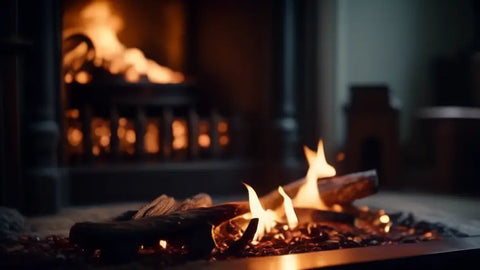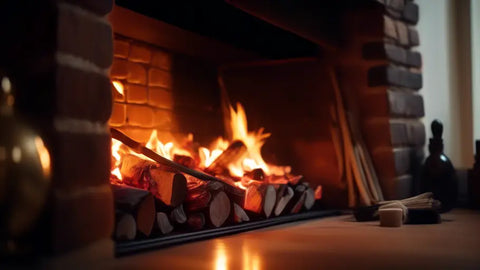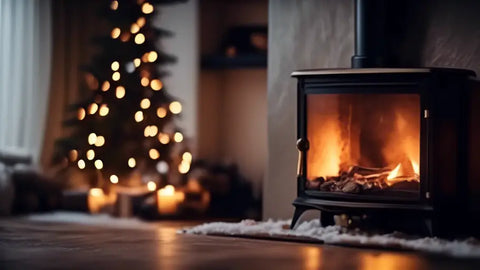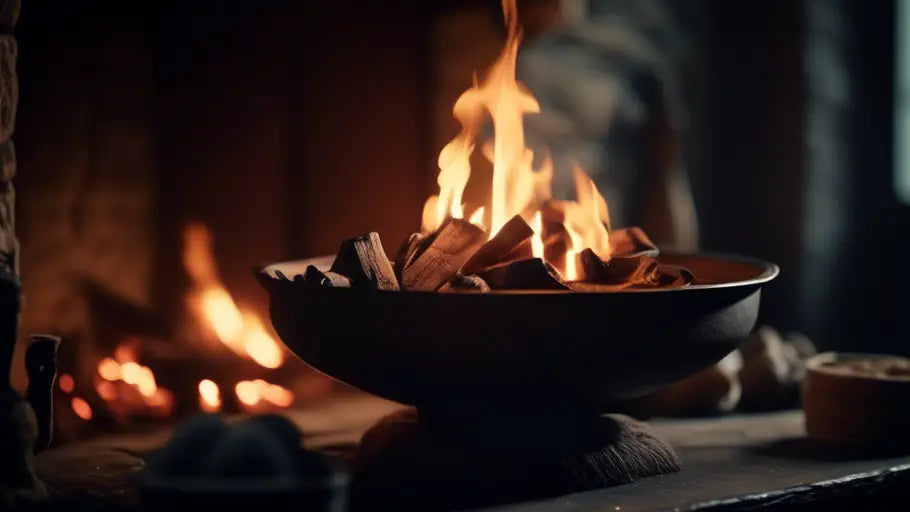The hearth has long been the heart of a home, a place where families gather, stories are told, and warm memories are created. Fire, as an element, has held a profound significance in our lives, both historically and culturally. Since the dawn of civilisation, it has played a vital role in shaping societies, providing warmth, light, and a means of cooking. Today, the hearth is more than a functional necessity; it is a symbol of warmth and hospitality, a focal point that adds charm and character to our homes.
Creating a beautiful and functional hearth involves a blend of careful planning, thoughtful design, and the right choice of materials. But, how do you go about creating a hearth that is not only aesthetically pleasing but also efficient and safe? Let's delve deeper.
The Role of Fire in Interior Design

Embracing the Natural Element
Incorporating natural elements into our living spaces has been a longstanding practice in interior design, and fire is no exception. The allure of fire lies in its ability to create a sense of warmth and intimacy, making a room feel cosy and inviting. As a literal source of heat, it provides physical comfort during the colder months, while its flickering flames add a certain level of visual interest and dynamic motion that is mesmerising to watch.
Moreover, fire has a profound psychological impact on human emotions. It can evoke a range of feelings, from a sense of security and tranquillity to joy and passion. Hence, a hearth can significantly enhance the overall mood and ambiance of a space.
Incorporating Fire into Different Design Styles
Fire can seamlessly blend into various design styles, whether it's modern, rustic, or traditional. For instance, a sleek, linear fireplace with a minimalistic surround works perfectly in a contemporary setting. At the same time, a stone fireplace with a chunky wooden mantel is more suited for a rustic or traditional décor.
Incorporating a fireplace into your design doesn't mean you need a grand living room. Even smaller spaces can benefit from the addition of a compact fireplace or Swedish fire log. The key is to understand the versatility of fire as a design element and use it to enhance the space rather than overwhelm it.
Selecting the Right Fireplace Design
Types of Fireplaces
When it comes to fireplaces, there are plenty of types to choose from. You have the traditional wood-burning fireplaces, which make use of kiln-dried wood or hardwood ash logs. Then there are gas, electric, and ethanol fireplaces, each with its unique features and requirements.
Wood-burning fireplaces offer an authentic experience, complete with the crackling of logs and the delightful aroma of burning wood. However, they require regular cleaning and maintenance. On the other hand, gas and electric fireplaces are easier to use and maintain but may lack the charm and warmth of a real flame. Ethanol fireplaces are a popular choice for modern homes due to their sleek designs and eco-friendly nature.

When choosing a fireplace, consider your lifestyle, preferences, and the overall design of your home. If sustainability is a priority, opt for a fireplace that makes use of sustainable wood or other eco-friendly fuels.
Fireplace Placement and Size
The placement and size of the fireplace play a crucial role in its aesthetic and functional effectiveness. As a rule of thumb, the fireplace should be proportional to the room and positioned to maximise its impact. Consider how the fire will be viewed from different vantage points in the room. A fireplace that's too small will get lost in a large room, while one that's too big can overwhelm a small space.
Fireplaces often act as the focal point of a room, so they should be placed where they can draw attention. A central location is usually ideal, but corner fireplaces can also work well in certain layouts.
Materials and Finishes
Fireplace materials and finishes can significantly impact the overall look and feel of your hearth. Common materials include brick, stone, metal, and tile, each with its unique characteristics and advantages.
Brick and stone fireplaces are known for their durability and classic appeal, while metal fireplaces, especially in black or dark shades, offer a more modern and sleek look. Tiles can be a versatile choice, with countless design options ranging from traditional to contemporary.
In choosing your fireplace material, consider not only the aesthetic appeal but also the durability, maintenance, and how it complements the overall design of your home.
Hearth Design and Decoration
Choosing the Right Hearth Material
The hearth, which is the area directly in front of the fireplace, needs to be made from a material that's not only heat-resistant but also complements the overall design of the fireplace and the room. Popular materials include stone, tile, and concrete, each offering a unique look and feel.

Stone hearths, for instance, lend a rustic and robust charm, while tile hearths allow for more design flexibility. Concrete, on the other hand, is favoured for its sleek, modern appeal.
Hearth Shapes and Sizes
When it comes to the shape and size of the hearth, there are no strict rules. It could be a traditional rectangular shape or something more unique to match the room's layout and design. However, it's important to ensure that the hearth is large enough to catch any sparks or embers that might escape from the fireplace.
Enhancing the Hearth with Accessories
Accessories can significantly enhance the aesthetic appeal of your hearth. Fireplace screens, for instance, can add an element of style while providing a safety barrier. Mantels offer a platform for displaying art, photos, or decorative items, while logs in a wood fuel basket or a stack of lumpwood charcoal can add a rustic touch.
Remember, the accessories you choose should complement the overall design of the fireplace and the room, creating a cohesive and harmonious look.
Maintaining a Beautiful and Functional Hearth
Cleaning and Maintenance
Maintaining a clean and functional hearth is crucial for the longevity and performance of your fireplace. Different types of fireplaces require different cleaning methods. For instance, wood-burning fireplaces need regular ash removal and chimney cleaning to prevent soot buildup.
Electric and gas fireplaces, on the other hand, require less frequent cleaning. However, they should be inspected regularly for any potential issues. Remember to always use firelighters and kindling for a cleaner and more efficient fire.
Safety Considerations
Safety should be a top priority when using a fireplace. This includes ensuring proper ventilation, using fireproof materials, and scheduling regular inspections. Always keep a suitable fire extinguisher nearby and make sure your smoke and carbon monoxide detectors are in working order.
Additionally, if you have children or pets, consider using a fireplace screen or guard to keep them safe.
Conclusion
In conclusion, a well-designed hearth can add significant aesthetic appeal and warmth to your home. By carefully selecting the right type of fireplace, placing it strategically, and choosing the best materials and accessories, you can create a hearth that not only enhances your living space but also provides a cosy and inviting atmosphere that you and your family can enjoy for years to come.
So, why not embrace the timeless beauty of fire and let it transform your home into a cosy haven? After all, there's nothing quite like the warm glow of a fire to make a house feel like home.

